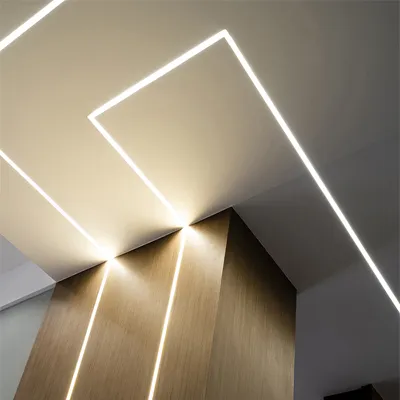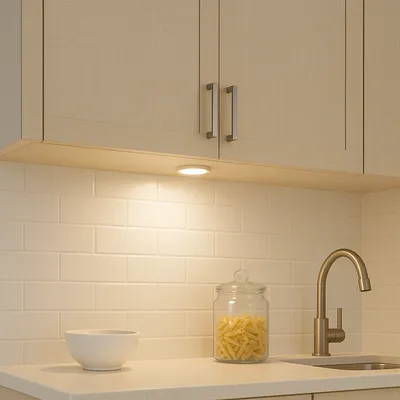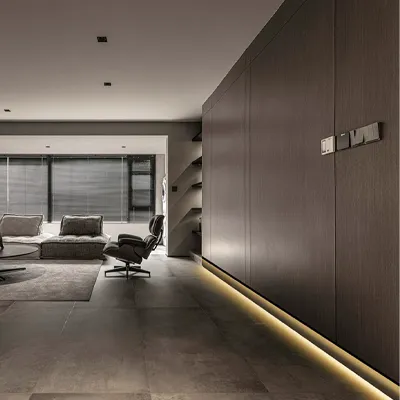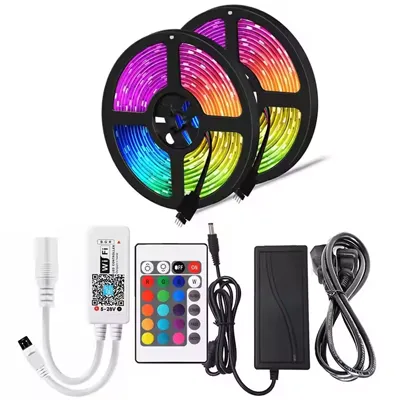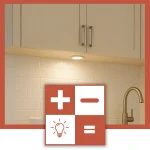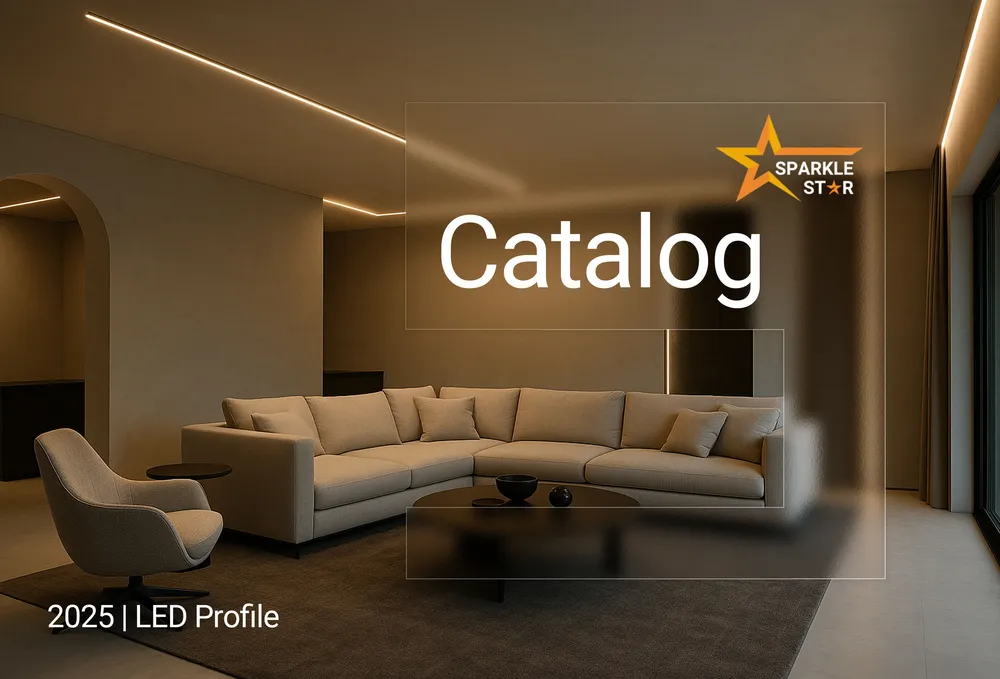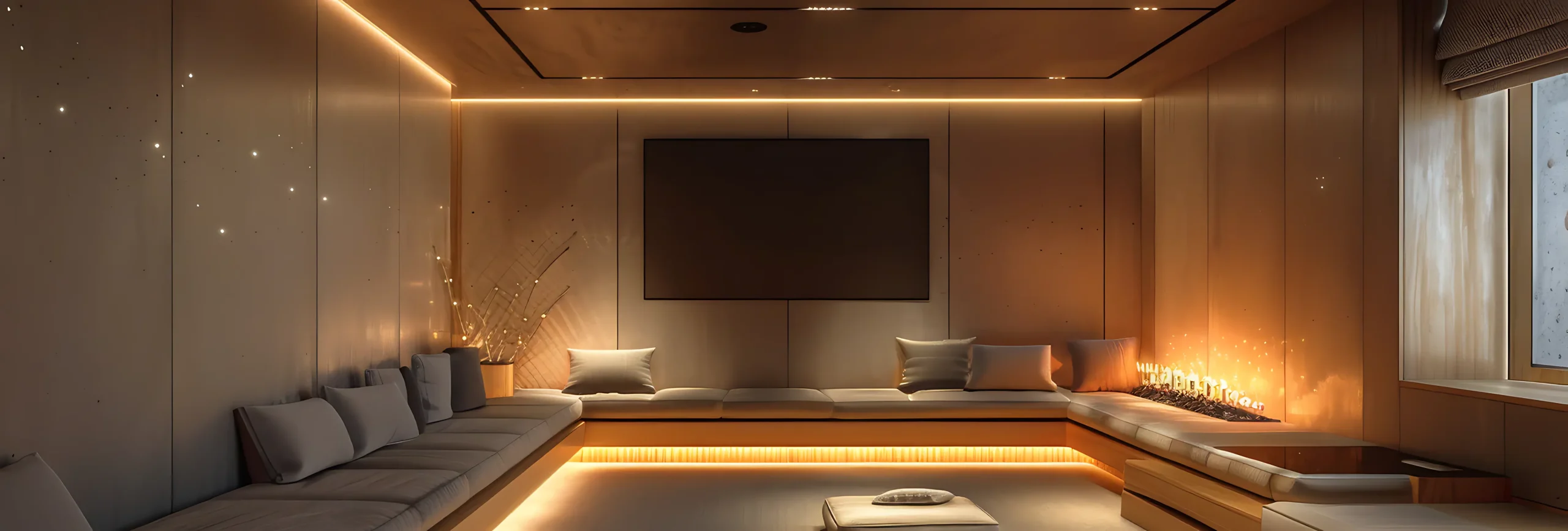
When planning a lighting project, most people focus on the exciting aspects like color and brightness. However, a successful and long-lasting installation often depends on a far more fundamental detail: the LED strip light width. This seemingly minor specification is, in fact, one of the most critical decisions you will make. The choice between an 8mm, 10mm, or 12mm strip is not just about its physical size; it directly impacts performance, accessory compatibility, and the final aesthetic of your design. Therefore, understanding the importance of LED strip width is the first step toward a professional result.
1. Why LED Strip Width Matters
Let's break down why this single measurement is so influential. The width of the flexible printed circuit board (FPC) is the foundation upon which everything else is built.The width of an LED strip light refers to its physical width, specifically the width of the PCB (printed circuit board). The structure of an LED strip light consists of multiple LEDs arranged in a regular pattern on a flexible circuit board (PCB). Therefore, the width of an LED strip light essentially refers to the width of the PCB, typically measured in millimeters (mm), indicating the dimensions of the strip’s base material.
The Foundation of Performance:
Firstly, a wider strip generally has more copper in its circuit board. Think of this copper as a multi-lane highway. A wider highway can handle more traffic (electrical current) with less congestion. Likewise, it also acts as a better radiator to dissipate heat. High-quality LED chips are powerful, but they generate heat. Consequently, better heat dissipation leads to a more stable performance and a significantly longer lifespan for your lights.
The Key to a Successful Installation:
Above all, this is the area where beginners most often run into trouble. The LED strip light width must be perfectly compatible with your chosen accessories.
Pro Tip: Always choose your aluminum profile (the channel) and your solderless connectors before you finalize your strip purchase. A 12mm wide strip will not physically fit into a slim 8mm profile, and using the wrong size connector will result in a failed connection. This single step can save you hours of frustration.
The Impact on Aesthetics & Light Output:
The board width also influences the visual outcome. For instance, a wider board is necessary to accommodate larger, more powerful LED chips. A classic example is the powerful SMD LED strip using 5050 chips, which almost always requires a 10mm or wider board to function correctly. On the other hand, for a very delicate and subtle line of light, a narrower strip might be the more elegant aesthetic choice.
The Trade-off in Flexibility:
In addition, there is a trade-off when it comes to installation flexibility. Generally speaking, a narrower strip is physically more pliable. As a result, it can be easier to bend around tight corners or install on complex, curved surfaces without putting too much stress on the circuit board.
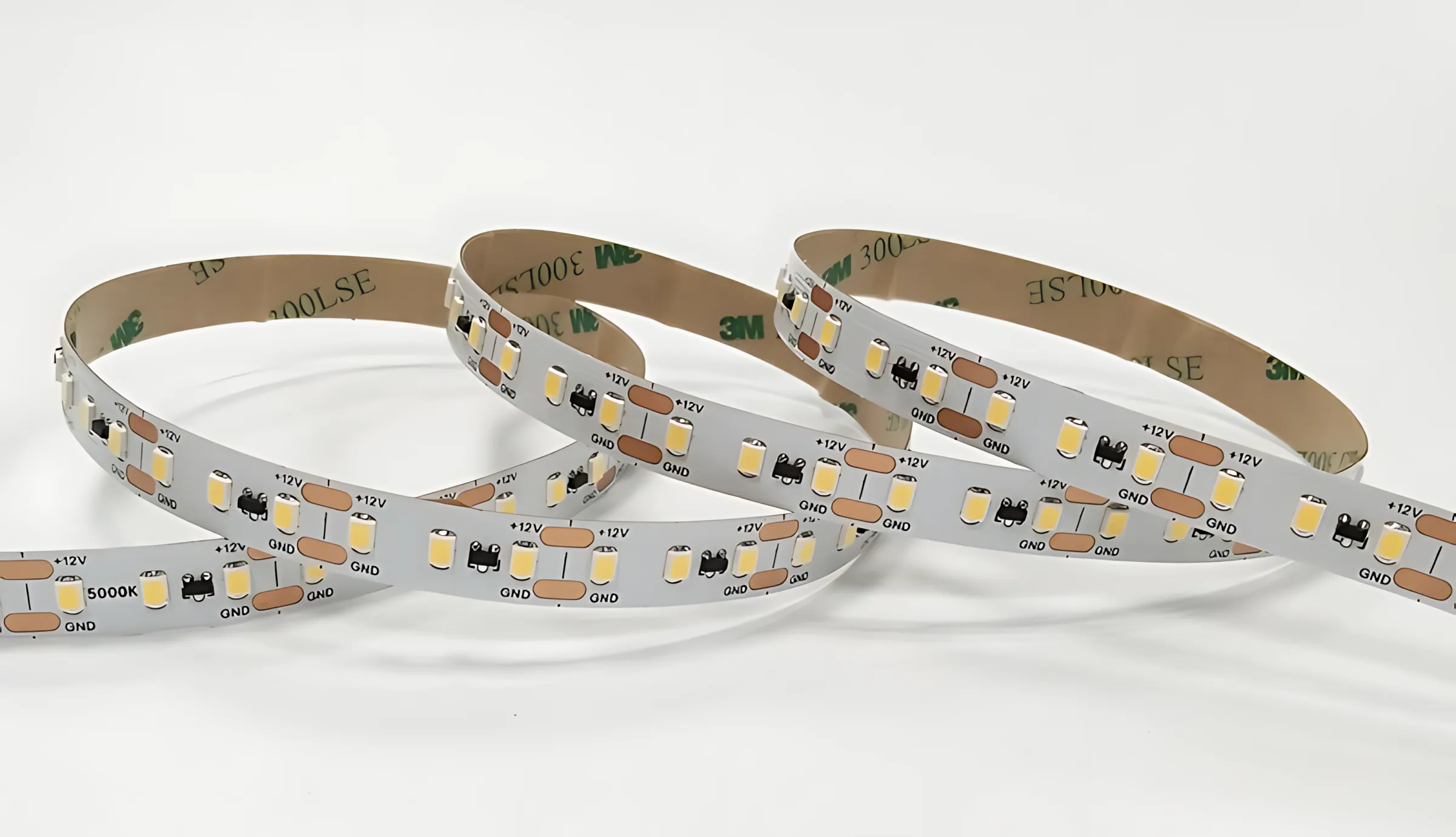
2. Common Misconception: Does a Wider LED Strip Use More Power?
This is a very common and logical question, but the answer is no.
To clarify, a strip's power consumption (measured in watts) is determined by the type and quantity of its LED chips, not by the width of its board. A high-density 8mm strip packed with efficient chips can easily use more power than a low-density 12mm strip. The width is chosen to properly support the power and thermal requirements of the chips it carries. Therefore, you should select a strip based on your brightness needs first, which then dictates the appropriate LED strip width.
3. A Guide to Common Widths and Their Applications
Different LED strip light widths are designed for different jobs. Here’s a detailed look at the most common sizes and where they excel.
Ultra-Narrow (e.g., 5mm):
This extremely thin strip is a specialty tool. Its primary advantage is its ability to fit where nothing else can. For example, it's perfect for backlighting intricate signage letters, detailed model-making, or embedding into thin architectural reveals where space is at an absolute premium. However, its power and brightness are typically limited due to its small size.
Standard-Narrow (e.g., 8mm):
This width offers a great balance between a slim profile and good performance. It is the standard for many lower-to-mid power single-color strips. Its flexibility makes it a favorite for general accent lighting, illuminating shelves, and navigating projects with complex curves. It's an excellent and versatile choice for many common household applications.
The Industry Standard (10mm):
This is certainly the most common and versatile LED strip width on the market. It provides an excellent combination of thermal performance and current capacity. As a result, it has become the standard for a huge range of products, including powerful single-color strips, most multi-color RGBW LED strip models, and the increasingly popular COB LED strip technology, which delivers a flawless, dot-free line of light. Moreover, it boasts the widest compatibility with aluminum profiles and connectors.
Wide Format (e.g., 12mm+):
This wider board is reserved for high-performance and specialty applications. Its extra surface area is necessary to manage the significant heat from very high-power LEDs. It's also required for accommodating the multiple circuits needed for advanced multi-channel strips, such as RGBCCT (RGB + Tunable White), which need more room for their complex wiring.
LED Strip Width | Best For | Common Products Available |
|---|---|---|
5mm | Tight spaces, signage, models | Low-power single color strips |
8mm | General accent lighting, curves | Mid-power single color strips |
10mm | Most applications, high-power, color-changing | |
12mm+ | Maximum performance, multi-channel | Ultra-bright strips, RGBCCT strips |
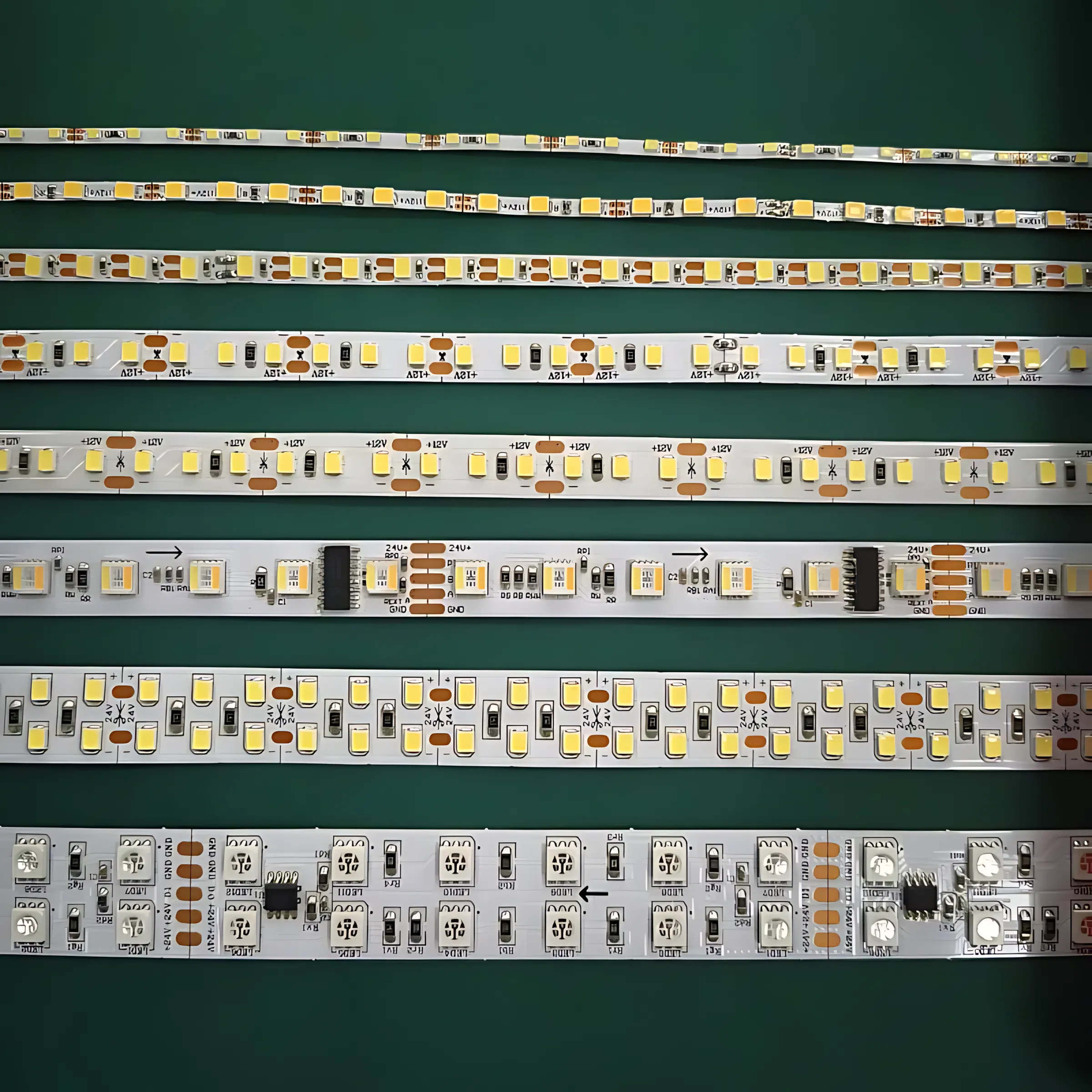
4.Brief Notes on Length and Height
Meanwhile, while width is foundational, two other dimensions also play a role.
A Quick Look at Strip Length:
The most important factor for length is voltage drop. Think of it like a garden hose; water pressure is weaker at the far end. Similarly, electricity weakens over distance, causing the strip to dim. To prevent this, most 12V/24V strips have a "max run" of 5 meters (16.4 ft) when powered from one end. For longer runs, you must supply power from both ends or run multiple strips in parallel.
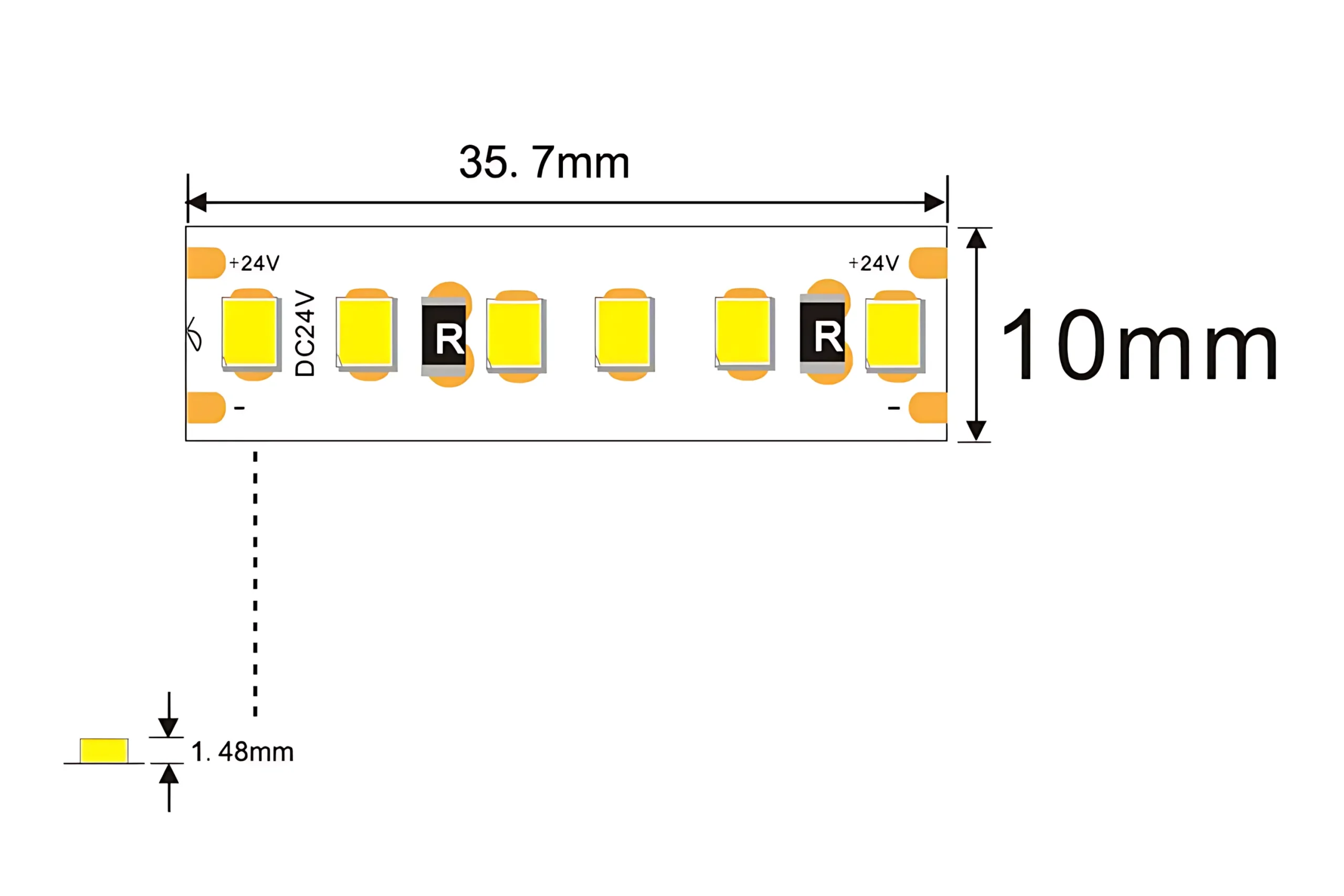
A Quick Look at Strip Height:
A strip's height (or thickness) is minimal but becomes critical when used with aluminum profiles. The key principle is that a deeper (taller) profile creates more distance between the LED chip and the diffuser cover. This extra space is what allows the light to blend and soften, which is essential for hiding the dots from an SMD LED strip and achieving a professional, seamless look.

Conclusion: Width is the Foundation for a Successful Project
In conclusion, the LED strip light width is far more than a simple measurement; it is a core technical specification that governs performance, compatibility, and aesthetics. While length and height are important for planning, the width is the foundational dimension you must get right from the start. To sum up, by understanding the roles of different widths, you can avoid common installation pitfalls, ensure your lighting performs reliably for years, and build a project that is both beautiful and durable.
Frequently Asked Questions (Q&A)
1. Should I just buy the widest strip available for the most brightness?
Not necessarily. A strip's brightness is determined by its LED chip type and density (LEDs per meter), not just its width. A high-density 8mm strip can easily be brighter than a low-density 12mm strip. The width is there to support the power and heat requirements of the chips.
2. Does a wider strip always require a larger power supply?
No. The power supply size (wattage) is determined by the strip's total power consumption (watts per meter multiplied by length). However, since very high-power strips require a wider board to function safely, you will often find that wider strips are also higher in wattage.
3. Can I connect strips of different widths together, like an 8mm to a 10mm?
This is not recommended. The copper connection pads will not align properly, making it very difficult to create a secure and reliable connection, whether you are soldering or using a solderless connector. It is always best to maintain a consistent width for a single, continuous run.
4. Is it more difficult to cut and reconnect a wider strip?
The cutting process itself is identical—you always cut along the designated line. However, wider strips (especially 12mm or more) often have more complex circuits with a higher number of connection pads (like for RGBCCT strips), which can make the process of soldering or using connectors slightly more intricate.


